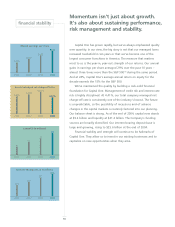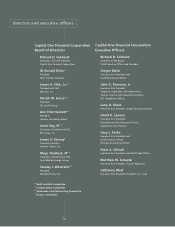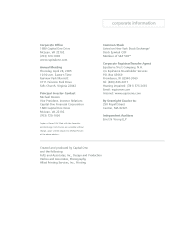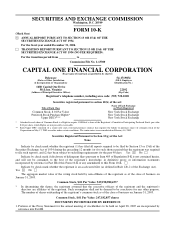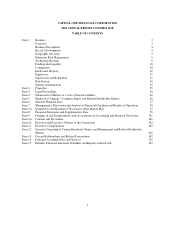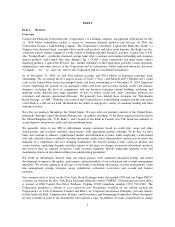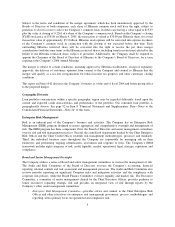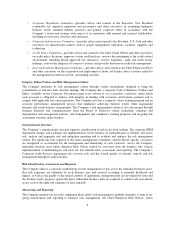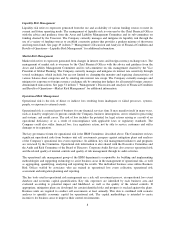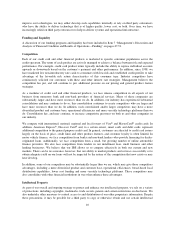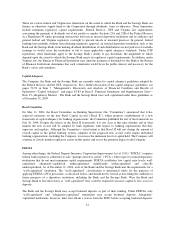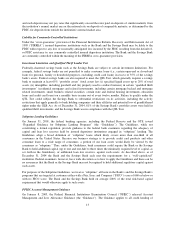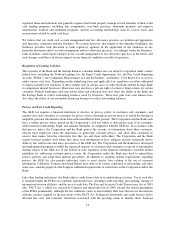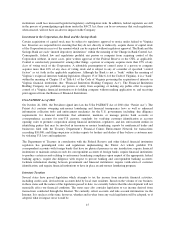Capital One 2004 Annual Report Download - page 28
Download and view the complete annual report
Please find page 28 of the 2004 Capital One annual report below. You can navigate through the pages in the report by either clicking on the pages listed below, or by using the keyword search tool below to find specific information within the annual report.Subject to the terms and conditions of the merger agreement, which has been unanimously approved by the
Boards of Directors of both companies, each share of Hibernia common stock will have the right, subject to
proration, to elect to receive cash or the Company’s common stock, in either case having a value equal to $15.35
plus the value at closing of 0.2261 of a share of the Company’s common stock. Based on the Company’s closing
NYSE stock price of $78.08 on March 4, 2005, the transaction is valued at $33.00 per Hibernia share, for a total
transaction value of approximately $5.3 billion. Hibernia stock options will be converted into options on shares
of the Company’s common stock in connection with the closing, if not exercised before that time. Each
outstanding Hibernia restricted share will be converted into the right to receive the per share merger
consideration (with the same terms as the Hibernia restricted shares, including transfer restrictions) elected by the
holder of the Hibernia restricted share, subject to proration. Additionally, the Company shall be required to
appoint the Chairman of the Board of Directors of Hibernia to the Company’s Board of Directors, for a term
expiring at the Company’s 2006 Annual Meeting.
The merger is subject to certain conditions, including approval by Hibernia stockholders, receipt of regulatory
approvals, the delivery of customary opinions from counsel to the Company and counsel to Hibernia that the
merger will qualify as a tax-free reorganization for federal income tax purposes and other customary closing
conditions.
This report on Form 10-K discusses the Company’s business as of the end of fiscal 2004 and before giving effect
to the proposed merger.
Geographic Diversity
Loan portfolio concentration within a specific geographic region may be regarded differently based upon the
current and expected credit characteristics and performance of the portfolio. Our consumer loan portfolio is
geographically diverse. See page 92 in Item 8 “Financial Statements and Supplementary Data—Notes to the
Consolidated Financial Statements—Note 20” of this form.
Enterprise Risk Management
Risk is an inherent part of the Company’s business and activities. The Company has an Enterprise Risk
Management (ERM) program designed to ensure appropriate and comprehensive oversight and management of
risk. The ERM program has three components. First, the Board of Directors and senior management committees
oversee risk and risk management practices. Second, the centralized departments headed by the Chief Enterprise
Risk Officer and the Chief Credit Officer establish risk management methodologies, processes and standards.
Third, the individual business areas throughout the Company are responsible for managing risk in their
businesses and performing ongoing identification, assessment and response to risks. The Company’s ERM
framework includes eight categories of risk: credit, liquidity, market, operational, legal, strategic, reputation, and
compliance.
Board and Senior Management Oversight
The Company utilizes a series of Board and senior management committees to oversee the management of risk.
The Audit and Risk Committee of the Board of Directors oversees the Company’s accounting, financial
reporting, internal controls and risk assessment and management processes. The Audit and Risk Committee also
reviews periodic reporting on significant Company risks and mitigation activities and the compliance with
corporate risk policies, while the Board Finance Committee oversees liquidity and market risk. The Executive
Committee, a committee of senior management chaired by the Chief Executive Officer, provides guidance to
senior executives regarding strategic risk and provides an integrated view of risk through reports by the
Company’s other senior management committees:
•Enterprise Risk Management Committee—provides advice and counsel to the Chief Enterprise Risk
Officer and other executives on enterprise risk management governance, process, methodologies and
reporting, with a primary focus on operational and compliance risk.
5



